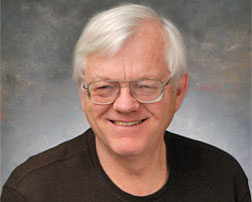- Three errors doctors make
I identify the three most costly errors in treating injured workers.
Fixing comp by fixing errors
Published in the June, 2007 issue of Risk & Insurance
For four years, the time I have been writing this column, I have failed to address head-on a problem right at the heart of managing workers comp claims. The problem is the high error rate in decision-making involving medical professionals.
Some errors are made by doctors alone. Others implicate adjusters and employers. I have been long convinced that to control workers claims, we need to reduce these errors.
That’s because conventional workers compensation claims practice tacitly accepts a very high error rate. Superior practice aims, often without being fully aware of it, to reduce error rates. Setting up initial care networks using occupational medicine clinics is an implicit error-reducing strategy.
These errors are directly responsible for half the workers compensation claims costs in America. Out of a stack of large claims, you can pick out how half should have been small claims. There errors are far more costly than most mistakes by individual adjusters. Yet claims audits routinely overlook them.
Hardly anyone tries to keep track of the frequency of errors. One person who has paid attention is Bruce Sundquist, of Munich Re America. He is by training a chemical engineer. Maybe we need more engineers in our field.
We can in fact reduce three types of errors.
The first error type is technical mistakes in diagnosis and treatment. These happen when clinicians do not keep up with medical advances, or are distracted, or don’t collaborate well when several specialties are brought in. We lay people recoil from the reality that serious mistakes occur often. But this is the nature of today’s rapidly changing, extremely specialized medicine.
One of the most frequent serious technical mistakes is what is called poor patient selection. Will this particular patient benefit or be harmed by spinal fusion, or pain treatment?
Prudently assume that well over half of your claimants with surgery have been harmed by technical errors. Audit your files to find them. Then, with an eye to when and how these errors come into the claim, refine your use of case management, second opinions and peer consults. Utilization review fails to control this problem.
Clinicians usually listen to the right messenger. Lynne Rosen of Best Doctors estimates that only about one in ten claimants need to change provider. She says that consultation works more often than assumed.
The second error type is vocational mis-counseling with the patient. Every time a surgeon discusses possible operations with an injured worker, that patient has a largely incoherent but momentous interior dialog about her or his work future.
We do not pay or train clinicians to prompt or steer the patient’s thinking in constructive directions. The chances of the average clinician making an error, simply by doing nothing, approach 100%.
Find clinicians who have a gift for counseling. They often self-select into occupational medicine. Pay them appropriately. Train them along continuing education pathways.
The third error type flits through the other types errors but deserves it own label: co-morbidity misadventures. The majority of high cost claims involve organic (such as heart conditions) or psychological (such as depression) problems along with the primary diagnosis. Don’t ignore or dispel the co-morbidity: it’s part of the patient.
Co-morbidities crush coping capacity and sharply reduce recovery odds. They cause very high healthcare use. Their negative effect on disability builds over time, but can be forestalled. An error in managing co-morbidities is really a failure in orchestration among parties. The doctor is there; so is the work supervisor.
If we focus on controlling these three error types, we can avoid the paralyzing cynicism that indicts doctors as irresponsible and workers as malingers. Quantify. Learn the error rates, then act. One insurer has cut its loss ratio by ten points this way – phenomenal.

